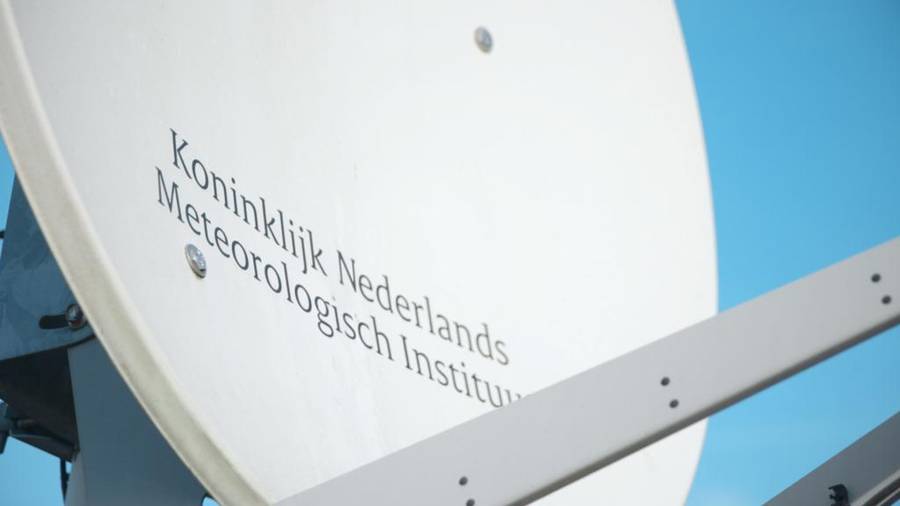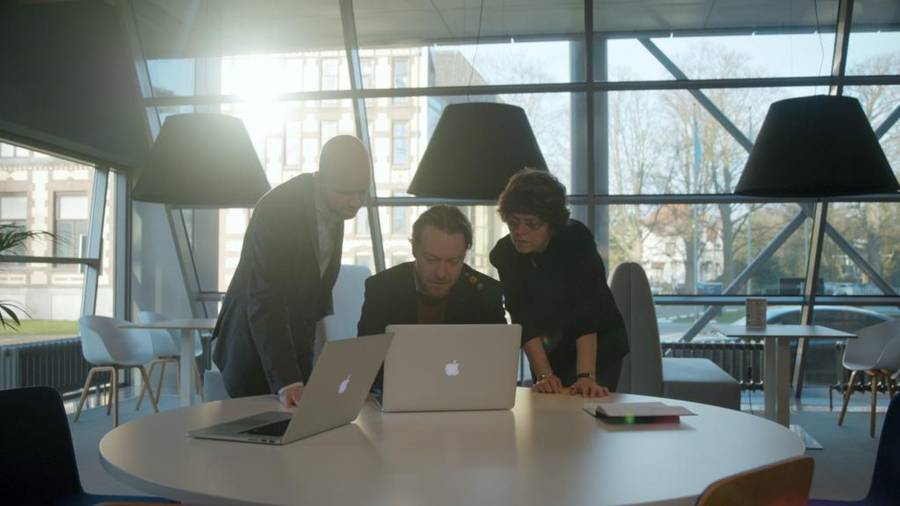
The Dutch Offshore Wind Atlas (DOWA) provides accurate wind information on the North Sea for the use of offshore wind energy. It is an innovation in the wind energy sector in the Netherlands. With this accurate wind information, offshore wind developers can make more accurate business plans with lower costs and more favourable financing.
Three parties worked on the DOWA project: KNMI created the atlas using state-of-the-art weather models, including millions of daily measurements and satellite and aircraft measurements over the North Sea. TNO was responsible for project management and worked closely with KNMI to validate the atlas with high-quality measurements from various offshore stations. Whiffle created very high-resolution models for detailed load and wake analyses of wind turbines. TKI Offshore Energy supported the consortium in creating the new wind atlas and encouraged parties to bundle their knowledge.
The DOWA project was certainly innovative. KNMI focused its innovation work on including zoom effects of wind farms in HARMONIE and enabled nesting of Whiffle's GRASP model in HARMONIE. Whiffle focused on improving turbine parameterisation in GRASP. TNO focused on improving knowledge of wind climatology in the North Sea at altitudes relevant to wind energy.
This allowed the consortium to provide highly accurate wind climatology on the North Sea. This was validated using satellite measurements, floating and mast-mounted LiDAR measurements and anemometers mounted on meteorological masts, both offshore and onshore.
Data
DOWA's output is enormous. Over 80 terabytes of data are available that are of interest to researchers, wind energy developers and producers of offshore wind energy. They can use the data, e.g. for making a business case when planning a new wind farm. In the DOWA, they can find accurate 'free stream' wind climatology. When they combine this information with local measurements, they can assess local zoom effects and get a complete picture of the local wind climate. This information can be used to decide on wind turbine design criteria or the optimal layout of the wind farm.
The DOWA dataset is an open dataset stored at the KNMI Data Centre (KDC) until May 2020. There is a dedicated website where users can download all the data to make their calculations. There are two types of datasets: daily 3D files and 10-year time series. They contain exactly the same information: 'free stream' wind information from 10 to 600 metres altitude on a 2.5 by 2.5 km grid. They are just 'organised' differently to accommodate different types of users. In the daily 3D files, users can select a day and download all available information for that day. The 10-year time series files are organised by location. Users of this set can select a grid cell location and download all available time series for that location. There are also additional high-resolution datasets that include wind impacts from existing wind farms.
Novelties
The DOWA is the successor to the KNMI North Sea Wind (KNW) atlas, which is also aimed at wind energy users. Both the DOWA and KNW atlases are a 'scaled-down' global reanalysis, but they have been made with improved versions of the models in a fundamentally different and unprecedented way. Whiffle's very high-resolution modelling (10 min, 64 m) is unique. Not only because of its resolution, but also because it takes into account the effect of existing wind farms on individual turbine levels, which is very useful for wind energy developers.

Challenges
Of course, there were challenges the consortium faced while developing the DOWA. For example, even the fastest computer in Europe needed 500 full days to calculate 10 DOWA years, not including preparation of the runs and their validation. For Whiffle, the challenge was to embed the wind turbine models in their weather model in a practically feasible and user-friendly way. And TNO, as project coordinator, had the challenge of ensuring that all results were publicly available on time. After all, the information was needed during and not after the ongoing offshore wind tenders.
Future development
During the project, the consortium also carried out exploratory work. The results were promising and the DOWA partners are continuing them. One of the innovations in the DOWA project was the inclusion of zoom effects of wind farms, important information for wind energy. With the strong growth of wind energy in the North Sea, their effects are becoming significant. Initial results are promising and the WINS50 project (Whiffle, TU Delft and KNMI) is investigating this further.
As offshore wind turbines become increasingly larger, they extract wind from a larger area. The traditional approach of a single inflow wind field at hub height representative of the entire rotor is clearly insufficient. Vertical, horizontal and temporal variations must certainly be taken into account. Especially considering that the larger wind turbine designs are leaner and more flexible, making the impact of excitations and loads increasingly important. These are, of course, driven by the incoming wind fields. As such, the project partners clearly recognised the value of linking detailed wind fields to aeroelastic codes to improve the loading of modern and future offshore wind turbines. This will support the design of very large wind turbines, making them structurally and economically feasible. TNO and Whiffle are defining a project to address this.

Project partners en TKI Offshore Energy
The DOWA project is carried out by the project partners TNO, Whiffle and KNMI. They are supported by TKI Offshore Energy, part of the Energy InnovationNL Grant from the Ministry of Economic Affairs and Climate (SDE+ Renewable Energy Call).
